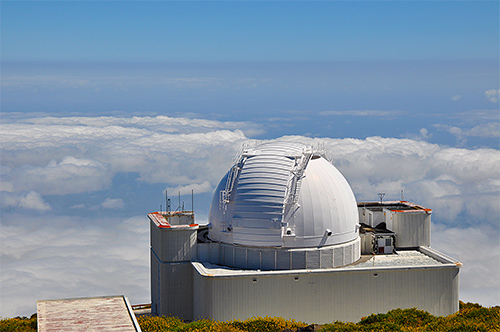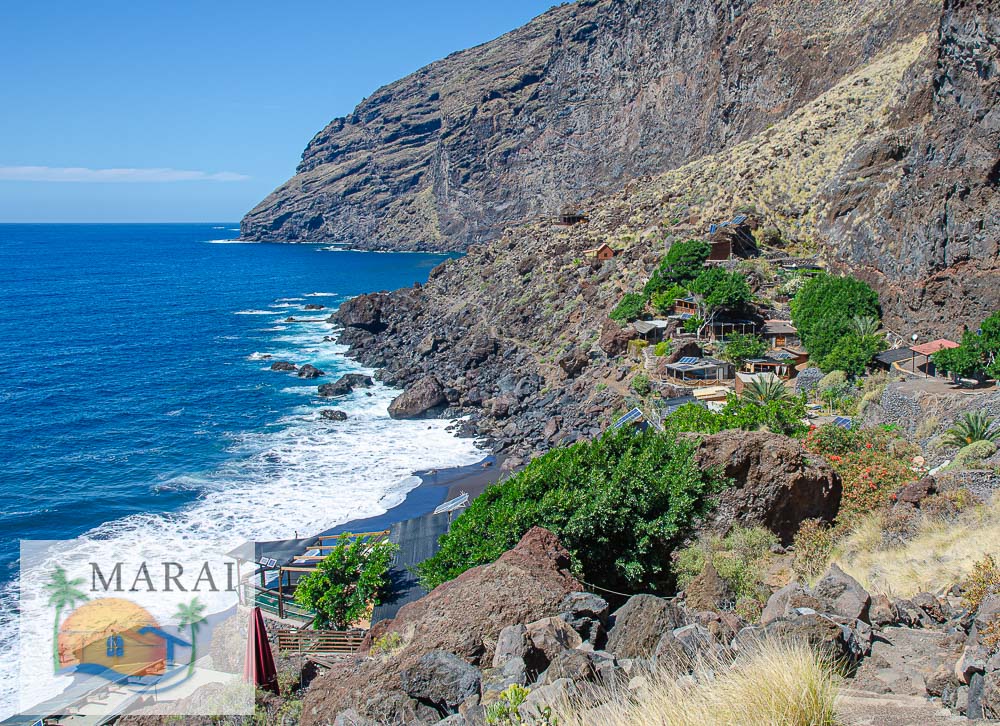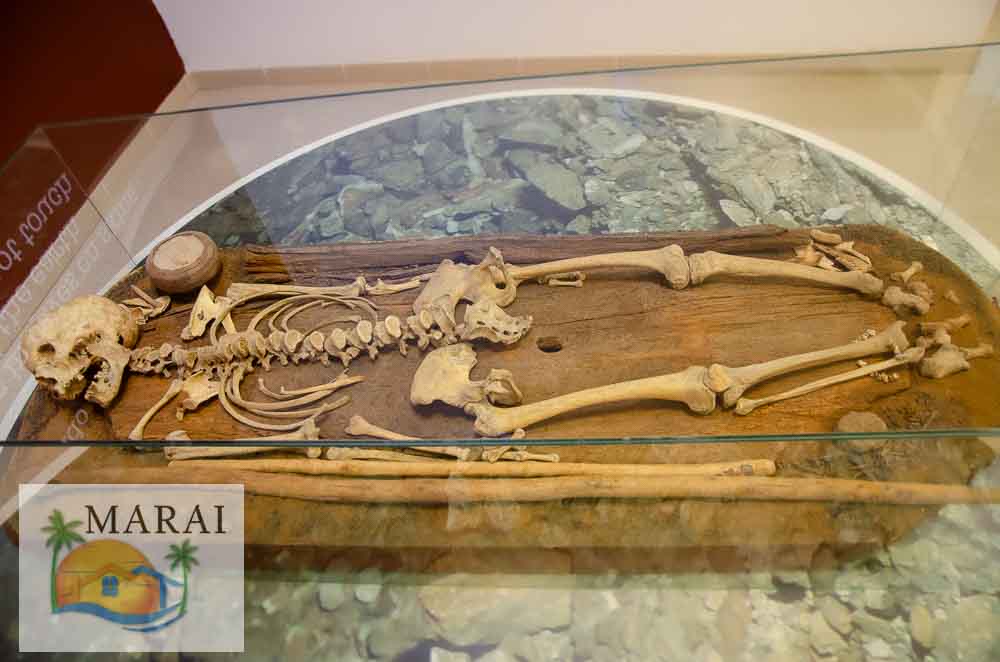La Palma: The Green Beauty of the Canary Islands
La Palma, also known as “La Isla Bonita” (the beautiful island), is one of the lesser known but nevertheless most impressive islands of the Canary archipelago. With an area of only 708 square kilometres and a population of around 80,000, the island is comparatively small, but its scenic diversity is breathtaking. From volcanic peaks to dense forests and dreamy beaches – La Palma offers something for everyone.
Location and how to get there
La Palma is located west of Tenerife and northwest of Gran Canaria. The island can be reached by plane or ferry. The airport is located near the capital Santa Cruz de La Palma and is served by various airlines. A ferry connects La Palma with the neighbouring islands of Tenerife, Gran Canaria, La Gomera and El Hierro. Those wishing to explore the island on their own should hire a car, as public transport is limited.
Landscape and nature from La Palma
La Palma is an island full of contrasts and surprises. The north side of the island is characterised by steep cliffs and lush forests. The north is also home to the La Palma Biosphere Reserve, an area with unique flora and fauna. There are rare plants and animals to discover here, including the endemic Canary Island pine forest and the blue finch, a rare bird species.
The center of the La Palma, on the other hand, is much drier and characterised by volcanic landscape. In the south is the Caldera de Taburiente National Park, a huge crater 10 kilometres in diameter. Inside the crater there are a number of hiking trails and lookout points from which you can enjoy a breathtaking view of the surrounding landscape.
Another highlight of the island is the Roque de los Muchachos, La Palma’s highest mountain at 2,426 metres. On the summit is an observatory from which scientists observe the starry sky. Visitors can visit the observatory and take part in guided tours. The newly established visitor centre takes the guest into the infinite vastness of our universe, a must for the La Palma visitor.
Science on La Palma
La Palma  is also very scientific. Its uniquely clear night sky has attracted astronomers from all over the world, and the world’s largest reflecting telescope at present has been built here. In addition to the research of the optical starry sky on the Roque de los Muchachos, there are the novel gamma-ray telescopes, which, along with gravitational wave research, is the new form of astronomy in the non-visible range. Here, absolute high-tech gathers with the most modern astro research; there is hardly a prestigious university that does not send its researchers to the island of La Palma.
is also very scientific. Its uniquely clear night sky has attracted astronomers from all over the world, and the world’s largest reflecting telescope at present has been built here. In addition to the research of the optical starry sky on the Roque de los Muchachos, there are the novel gamma-ray telescopes, which, along with gravitational wave research, is the new form of astronomy in the non-visible range. Here, absolute high-tech gathers with the most modern astro research; there is hardly a prestigious university that does not send its researchers to the island of La Palma.
Special mention should be made of the successful attempt by the Nobel Prize winner in physics, Anton Zeilinger, to demonstrate quantum entanglement at a distance of over 140 km. On La Palma, Mr Zeilinger found the technical infrastructure, qualified staff and, above all, an island government open to knowledge.
He received the Nobel Prize for his research in the field of quantum communication and quantum cryptography, especially for experiments with entangled photons and quantum states.
Thus, La Palma attracts many astrophotographers who find their place in private astronomy centres to photograph and study galaxies and distant objects. The Finca Athos in Las Tricias should also be mentioned here, which is unique on La Palma in terms of equipment and know-how.
We also have some properties on offer which are excellently suited for the installation of astronomical equipment.
Beaches on La Palma
 La Palma also has some beautiful beaches, although they are not as well known as the beaches on the other Canary Islands. Puerto Naos beach in the west of the island is one of the best known beaches and offers fine sand and clear water. The beach also has a promenade with shops, restaurants and beach bars and an unforgettable sunset – almost every evening.
La Palma also has some beautiful beaches, although they are not as well known as the beaches on the other Canary Islands. Puerto Naos beach in the west of the island is one of the best known beaches and offers fine sand and clear water. The beach also has a promenade with shops, restaurants and beach bars and an unforgettable sunset – almost every evening.
The Playa de Los Cancajos, near the airport, is another popular beach with turquoise waters and a variety of leisure activities such as diving and snorkelling.
The longest beach on La Palma is the one in Tazacorte, and also the only one where an official FFK beach is connected. There are several restaurants, supermarkets, souvenir shops and a pharmacy.
Right next to the beach is the harbour with its yachts from all over the world and some other good restaurants.
Culture and history
La Palma is a beautiful island located in the Canary Islands archipelago, a group of islands belonging to Spain, off the northwest coast of Africa. The island has a rich culture and history, shaped by its unique geography and the various peoples who have inhabited it over the centuries.
is a beautiful island located in the Canary Islands archipelago, a group of islands belonging to Spain, off the northwest coast of Africa. The island has a rich culture and history, shaped by its unique geography and the various peoples who have inhabited it over the centuries.
The island of La Palma was originally inhabited by the Benahoaritas, a people of Berber origin who arrived on the island around 2,000 years ago. They lived a simple life, practicing agriculture and using stone tools to hunt and gather. The Benahoaritas left a significant cultural legacy, including cave paintings, petroglyphs, and other forms of rock art that can still be seen on the island today.
In the 15th century, the island was conquered by the Spanish, who established settlements and introduced Christianity to the island. La Palma became an important center of trade and commerce, and its port was used as a stopping point for ships traveling between Europe and the Americas.
The island’s culture is a mix of Spanish and Canarian traditions, with a unique flavor all its own. One of the most notable aspects of La Palma’s culture is its vibrant music and dance scene. The island has a strong tradition of folk music, with the timple, a small guitar-like instrument, being a central feature of many local performances. The island also has its own distinctive style of dance, known as the isas.
La Palma is also known for its delicious cuisine, which features fresh seafood, local cheeses, and a wide variety of fruits and vegetables grown on the island. One of the island’s most famous dishes is the papas arrugadas, a dish of small, salted potatoes served with a spicy green sauce called mojo.
Another important aspect of La Palma’s culture is its festivals and celebrations. The island has a number of traditional festivals, including the Fiestas Lustrales, a religious festival that takes place every five years and attracts visitors from all over the world. During the festival, the island’s towns and villages come alive with music, dancing, and other cultural events. There is also the Devil’s Festival (Fiesta del Diablo) in the village of Tijarafe. And not to forget the probably whitest carnival worldwide “Los Indianos”, in the capital Santa Cruz de La Palma.
The island’s geography also plays a significant role in its culture and history. La Palma is home to the Caldera de Taburiente, a massive volcanic crater that is now a national park. The park is a popular destination for hikers and nature lovers, offering stunning views of the island’s rugged landscape and unique flora and fauna.
In conclusion, La Palma is a fascinating island with a rich culture and history. Its unique geography and blend of Spanish and Canarian traditions make it a truly special place, full of vibrant music, delicious cuisine, and colorful festivals. Whether you’re a history buff, a nature lover, or simply looking to experience a new and exciting culture, La Palma has something to offer everyone.

